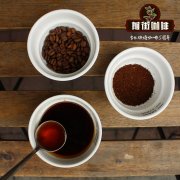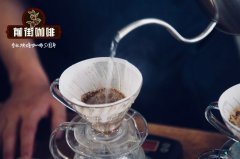Guatemala Vivette Nango | Yassapakari Cooperative (Smithsonian friendly Bird) is certified

Professional coffee knowledge exchange more coffee bean information please follow the coffee workshop (Wechat official account cafe_style)
Guatemala Vivette Nango Yasapakari Cooperative (Smithsonian friendly Bird) certified organic bean bourbon, Cadura flavor?
Coffee has helped Guatemala's economy in the past century. It is estimated that there are about 120000 coffee producers, accounting for 40% of agricultural exports. As many as 20 of 22 provinces are engaged in coffee cultivation. Almost all areas grow coffee beans, 98% are shaded by trees, and are almost monopolized by Arabica beans. The main sub-varieties are Bourbon, Tipica, Caturra, Catua í, Pache and Pacamara. Guatemala's high altitude and 300 different microclimates, coupled with stable rainfall and fertile soil rich in minerals, are ideal for coffee cultivation in Central America.
Since the early 1990s, Anacaf é has taken the lead according to the characteristics of coffee, growth climate, soil quality and altitude. Eight different producing areas for producing alpine hard beans (SHB) are: Ekat Nango Valley (the Acatenango valley), Antigua (Antigua), Attila (Atitl á n), Coban Rain Forest (Coban á n), Farrakhan Nice Plain (the Fraijanes plateau), Vivetta Nango (Huehuetenango), New Oriental (Nuevo Oriente) and San Marcos volcanic area (San Marcos). The main harvest season is from December to March of the following year. Relatively high-altitude producing areas such as Vivette South fruit can be in April, as long as the harvest is completed, it will be shipped.
Asociaci ó n Barillense de Agricultores (ASOBAGRI) Yasapakari Cooperative is located in the mountain city 200km north of the coffee city of Vivette Nanguo in northwestern Guatemala, surrounded by green forest conservation. There are 711 coffee farmers and 352 independent farmers who have passed organic certification. Most of their members still communicate in traditional Mayan language. The mission of Yasapakari Cooperative is to strengthen the green production of small farmers in the region. And maintain traditional organic and shade production, invest the proceeds in dry squares and warehouses to support their own health care and education programs.
Name of Farm Farm: Asociaci ó n Barillense de Agricultores Yasapakari Cooperative
City City: Huehuetenan Vivette Nanguo
Country countries: Guatemala Guatemala
Altitude altitude: 1650-1850 m
Certification certification: Fair Trade certification ORIGIN organic, Smithsonian Bird Friendly Smithsonian friendly bird
Coffee Characteristics: coffee characteristics
Variety variety: Bourbon Caturra bourbon Kadura
Processing System treatment: Fully Washed and dried on patio is washed and dried on the scaffolding
Top Jury Descriptions judge's comment: the baking degree measured by the cup for 60 seconds at the beginning of the first explosion (Cinnamon)
Aroma aroma / flavor flavor: Violet, raspberry, black tea, peach, jasmine, red vegetable sweet, grass sweet
Sour: grapefruit acid, citric acid, green orange
Complex complexity and other other: acid value is complex and solid, astringency will not be stuck, medium and re-baked sweet enough purity, smooth good coffee
Qianjie recommended cooking:
Filter cup: Hario V60
Water temperature: 90 degrees
Degree of grinding: small Fuji 3.5
Cooking methods: the ratio of water to powder is 1:15, 15g powder, the first injection of 25g water, 25 s steaming, the second injection to 120g water cut off, waiting for the powder bed water to half and then water injection, slow water injection until 225g water, extraction time about 2:00
Analysis: using three-stage brewing to clarify the flavor of the front, middle and back of the coffee. Because V60 has many ribs and the drainage speed is fast, it can prolong the extraction time when the water is cut off.
Important Notice :
前街咖啡 FrontStreet Coffee has moved to new addredd:
FrontStreet Coffee Address: 315,Donghua East Road,GuangZhou
Tel:020 38364473
- Prev

Western Valley of Costa Rica | Candelaria Candle microprocessor field honey processing bean Kadura, card
Professional coffee knowledge exchange more coffee bean information please follow the coffee workshop (Wechat official account cafe_style) Costa Rica Western Valley | Candelaria Candle microprocessing field honey treatment bean Kadura, Kaduai flavor? Costa Rica is the most stable and best coffee in Central America. Coffee production has a very long history and has been exported to Central America as early as the 19th century.
- Next

Costa Rica Central Valley-Don & #8231; Ricardo Microprocessing Farm Yellow Honey to treat Kaddura Flavor
Professional coffee knowledge exchange more coffee bean information please follow the coffee workshop (Wechat official account cafe_style) Costa Rica Central Valley-Don Ricardo microprocessing plant yellow honey to deal with Kaddura flavor? Costa Rica is the most stable and best coffee in Central America. Coffee production has a very long history and has been exported to the United Kingdom as early as the 19th century.
Related
- Detailed explanation of Jadeite planting Land in Panamanian Jadeite Manor introduction to the grading system of Jadeite competitive bidding, Red bid, Green bid and Rose Summer
- Story of Coffee planting in Brenka region of Costa Rica Stonehenge Manor anaerobic heavy honey treatment of flavor mouth
- What's on the barrel of Blue Mountain Coffee beans?
- Can American coffee also pull flowers? How to use hot American style to pull out a good-looking pattern?
- Can you make a cold extract with coffee beans? What is the right proportion for cold-extracted coffee formula?
- Indonesian PWN Gold Mandrine Coffee Origin Features Flavor How to Chong? Mandolin coffee is American.
- A brief introduction to the flavor characteristics of Brazilian yellow bourbon coffee beans
- What is the effect of different water quality on the flavor of cold-extracted coffee? What kind of water is best for brewing coffee?
- Why do you think of Rose Summer whenever you mention Panamanian coffee?
- Introduction to the characteristics of authentic blue mountain coffee bean producing areas? What is the CIB Coffee Authority in Jamaica?

